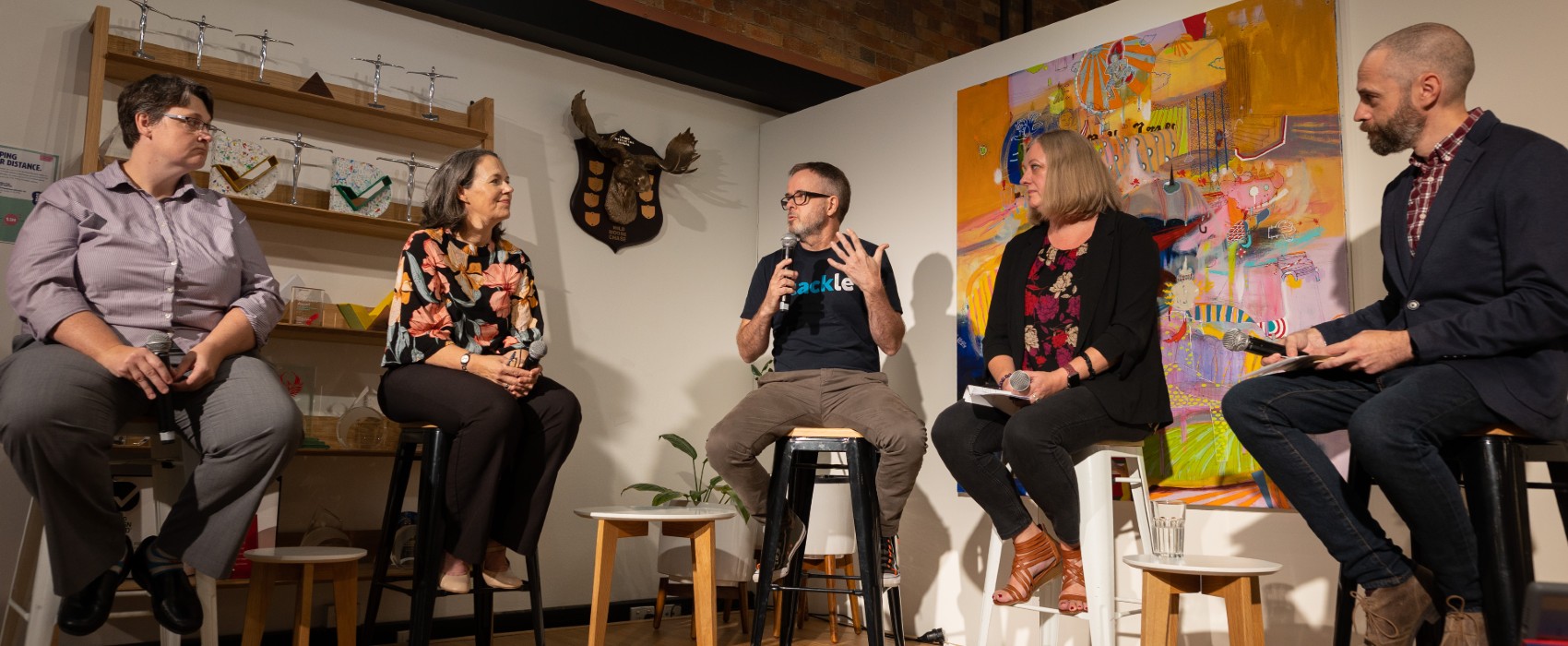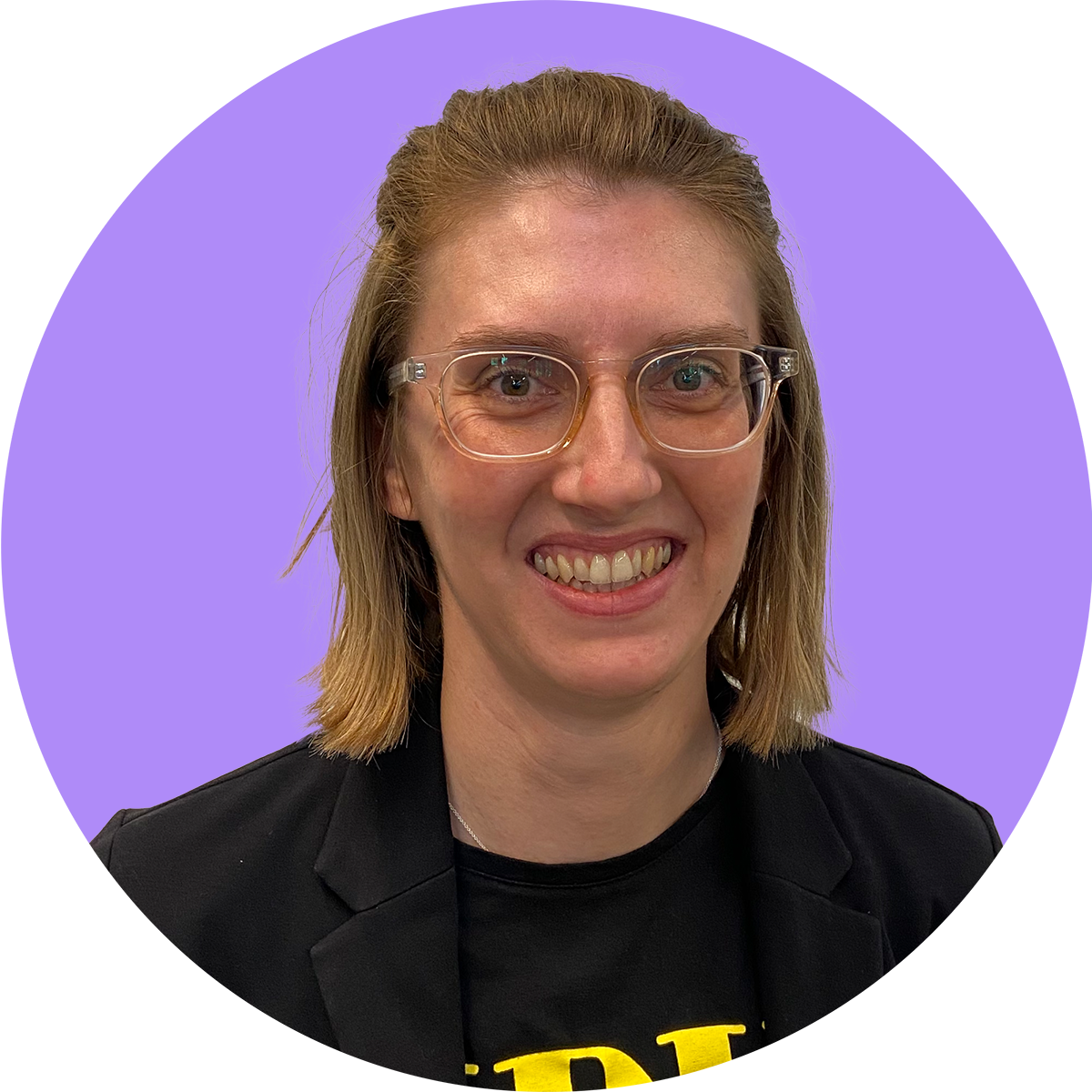When we talk about “student experience”, it runs the risk of sounding like a singular, monolithic thing. It's the student experience. It's the student journey. The reality is that there are as many student experiences as there are students.
So how do we make sure that we capture those varied needs? How do we lean into that nuance to create the conditions for all students to thrive? Especially now, as the sector considers how learnings from COVID can be a catalyst for reimagining a more equitable education experience.
These questions and more were the focus of our latest Future Led panel featuring Professor Caroline Rueckert from Griffith University, Professor Kate Ames from CQUniversity, Dr Rachel Fitzgerald from UQ, and Sean Duffy from ed tech startup Stackle.
When we talk about reimagining the possibilities of student experience — that can point to change in every dimension of what a university does. For example, adapting the curriculum, how courses are delivered, support structures, system processes, not to mention the accompanying stakeholder buy-in and internal capacity needed to make any change sustainable.
So why go to all that effort? There is no shortage of reasons why, but for this discussion, it was more valuable to talk about how we can achieve a more equitable and inclusive educational experience.

(L-R Professor Caroline Rueckert, Professor Kate Ames, Sean Duffy, Dr Rachel Fitzgerald, and Liquid's Sam Daley)
Where do we need to start?
How can we genuinely create conditions for a greater diversity of students to thrive? Caroline told us there was an exciting conversation about this happening in higher education that was centering things like equity, diversity, and inclusion in all parts of university life.
“One of the things I love is that we've moved from seeing equity, diversity, and inclusion as something we bolt on, to really asking more fundamental questions about the underlying structures,” she said.
“What's shifted is the question around, how do we do this in a way that's actually more fundamental to our missions as universities?
“What that's meant is a lot of universities now are changing how they are structuring their courses and breaking that down. For support services... [it’s been] a mindset shift. Instead of when students need support, they have to come to us, we have to meet students where they're at.
“So that's the first thing, moving from a ‘You meet us where we are’ to ‘We need to meet you where you are’.”
And a big part of being able to do this, Caroline added, was involving students.
“One piece that I'm really passionate about is how do we involve students as partners in their own learning. Not just going out and consulting them, but meaningfully involving them in the design of their learning, seeking their feedback and really having them play a role in the delivery of supports,” she said.
“Because what my experience has been is, often the first point where they activate their learning is not what happens in the classroom. It's often because they've got a peer or a club - so students helping students, students playing a role in their learning.
“That's a really important part of that conversation of, how do we create a more inclusive environment.”
The challenges and opportunities of data
A key part of being able to progress on goals of diversity and inclusion is the availability of data. But not just any old data, as Kate discussed. Effective measurement means knowing how to balance both quantitative and qualitative insights, she said.
“I think it's extremely complex and there's a couple of issues at play. One is, are we asking the right questions when we're seeking to measure? What definitions are we using when we're using a term like engagement? What does that mean? What assumptions are we making where there is silence of data?
“One of the things that can happen is a dismissal of observation and the personal in the data. So we can look at all the analytics but we'll dismiss what the lecturer is saying about what the students are doing, because that's not the data. Actually, it is, you're just not seeing that as data.
“So those questions of how do we take notice of what can't be measured, or what we think can't be measured, what assumptions are we making about that?”
Qualitative insights can go a long way to understanding the individual needs of students and their learning requirements, Kate added.
“I'm studying educational neuroscience and I have a specific interest in neurodiversity. I have had deep conversations with people, I've drawn on that knowledge almost every single day, but ‘the system’ will tell you that I'm disengaged if I don’t log into a system for a few weeks,” she said.
“So in my team the key word is ‘relax’. Be alert, but not alarmed.
“How do you give a student agency to engage in a way that they want to engage without panicking? Now, obviously we have analytics behind the scenes that might indicate that I haven’t turned up for six weeks, but then someone will ring me and I'll have a conversation that reassures them.
“Our whole support system is now designed around giving the student agency without panicking and then having solid conversations with someone.”
Designing for diverse needs
Designing for diversity means thinking holistically about educational experiences and asking questions from different perspectives.
What this means for platforms like Stackle, which supports diverse and inclusive education experiences, is getting the balance right between what educators need and what students need – and engaging deeply with user feedback.
“What we always do when we're developing applications is a very collaborative process. That's just a no-brainer,” Sean said.
“We would always bring in academics as stakeholders, so they are involved in the project throughout the full duration. That's always going to happen. There's more of a newer space around students as partners, which is very much coming into fruition. I think there's a lot of appetite for that.
“But there is a nervousness around making sure students aren't driving us down rabbit holes with things they might think they need but they don't necessarily need.
“But getting feedback on UX designs; that feedback is absolute. When people question that and say, ‘But they should have known to click over here’ – no, they shouldn't.
“You've got to be really careful about the questions that you ask and the answers that they give. They're part of the equation and part of the design thinking, but they are not necessarily the solution. People don't necessarily know what they need... you need to interrogate that and pull that apart.
“That's very much the tricky bit and I guess that's the art in that science. It's not black and white.”
Technology vs vision
Technology platforms play an important role in delivering learning, so what impact should platforms have on curriculum – and vice versa?
Rachel told us that shaping an innovative curriculum that’s student-centered and future-focused has to start with a vision, not the technology.
“To get a vision, it's more than, what do we always do? What do the students want? What's happening? It's literally about getting out there and trying to do some kind of future horizon gazing and saying, what is it we're going to need? Where does this need to go? Who needs to be involved?
“The start of the process is really getting those people together - it's the program team, it’s students in the room, it’s support services, it’s our industry partners or people that have that ability to see where it's going.
“The other part of that – and this is the crucial part from the technology side – is the learning design.
“This whole process is about design thinking because you're bringing a lot of people together. They have to spend a lot of time thinking about this big vision for everything that's going to happen and breaking it down to every course within that program.”
Reimaging a curriculum is not without its challenges. Rachel added that any work on a vision needs to factor in the ways that such an ambition can fall apart because of time commitments.
And sometimes, innovation can run into other hurdles, such as the limitations of legacy platforms. The example she offered was the traditional university learning schedule of semesters. If a campus wants to trial trimesters, are internal platforms set up to support a change like this?
Priorities for the year ahead
As always, our hour-long discussion is never enough! Rounding out the conversation, the speakers offered their priorities for improving the student experience in 2023.
Caroline said hers was a simple one “but really complex at the same time”.
“I'm tired of hearing the language of excellence and inclusion is two separate conversations. When we think about career readiness at Griffith, everything we do has inclusive excellence at the centre.
“So that's putting a diverse student experience at the centre rather than thinking of that as an afterthought.”
Kate agreed with this, adding that at CQUniversity this included “asking really hard questions about inclusion, such as, have you thought enough about how people who are neurodivergent or people who are from First Nations backgrounds are situated and present in your curriculum?”
For Sean and the Stackle team, the priority is to engage with an even bigger cohort of students.
“The thing that comes to mind is wanting to get what we're building in front of more and more learners, but very much more and more learners across the continuum – so a business student and an animation student, a film student, and so on. Figuring out what that great learning experience looks like.”
For Rachel, she wants to celebrate some of the people who sometimes fly under the radar at UQ.
“One of my priorities for this year is to raise the profile of those that are doing some amazing work designing innovative curriculum and creating great student experiences,” she said.
More in our Future Led series:
